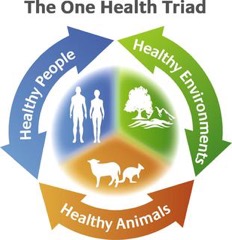The following post is one of a series previewing the research that will be presented at the in Helsinki, Finland (26–30 May 2019).
A guest post by Frances Nilsen
 What is “One Health”?
What is “One Health”?
“One Health” is an organizational framework encouraging interdisciplinary collaborations in education, research, clinical practice, policy, and communication stemming from the recognition that the health of people, animals, and the environment are linked. One Health partnerships are growing internationally, mainly emphasizing prevention of infectious zoonotic diseases (those that can be passed between animals and humans), but the environmental quality connections to human and animal health are often less developed in One Health collaborations. Continue reading
